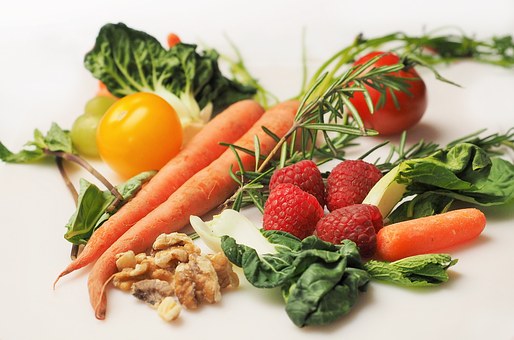
Fruits and vegetables are incredibly beneficial to a healthy diet plan. Keep reading for additional information:
The number of portions a day?
2 1/2 cups of vegetables/day and 2 cups of fruit/day 1-2 parts of fruit everyday and 3-5 parts of veggies daily– some raw and some ready Range (idea: consume the rainbow). Challenge yourself to see the number of different ranges you can consume each week! Lower starch veggies: leafy greens, mushrooms, tomatoes, beets, cruciferous veggies, summertime season squash and zucchini, celery, asparagus, artichokes, pea pods, radishes, turnips, green beans, onions Vibrant fruits: Berries, citrus fruits, pomegranates, apples, kiwi (did you understand you can take in the skin) and avocado (a fruit) are exceptional sources of vitamins, minerals and fiber If you are searching for techniques to include some calories to your diet strategy, consist of more of the starchy veggies like sweet potatoes, spuds, corn, and peas.
Leafy greens:
Leafy green veggies include a range of nutrients and bioactive substances consisting of vitamin E and K, lutein, beta carotene and folate. Phytochemicals, Anti-oxidants, Fiber, Vitamins, and Minerals 1 serving each day of leafy green veggies may decrease cognitive reduction compared to folks who rarely or never ever consume leafy green veggies *
Brassica veggies aka cruciferous veggies:
* Resource: https://www.npr.org/sections/health-shots/2018/02/05/582715067/eating-leafy-greens-daily-may-help-keep-minds-sharp
Getting the advised quantity of veggies in your everyday diet plan is an obstacle you can quickly dominate. Do not forget to consume a mix of prepared and raw veggies to get the most out of your diet strategy!
Audrey Caspar-Clark MS, RD, LDN got her M.A. in Nutrition Education from Immaculata University in 2009 and her B. S. in Nutrition from Immaculata University in 2000. She holds an active accreditation as a professional in oncology nutrition (CSO) and works as an out-patient oncology dietitian at the Medical facility of the University of Pennsylvania and the Abramson Cancer Center, a huge cosmopolitan cancer center handling upwards of 6000 customers annual. She is a routine supplier of nutrition associated education at oncology conferences, client assistance system, and community health programs; along with using academic sessions for workers. A few of her interests consist of cooking and keeping foods, sustainable farming, equity in health care and food flow, and animal well-being.
Plentiful sources of anti-oxidants, sulfur consisting of phytochemicals (glucosinolates), nutrients (vitamin C, vitamin K, vitamin A, potassium) and fiber. A lot of the cruciferous veggies can be consumed raw: radishes, daikon, arugula, cabbage, watercress, and mizuna. Steamed collard greens can be used for a low carbohydrate wrap for a sandwich
This entry was released in Homepage, Nutrition Nuggets, OncoLink News and tagged healthy living, nutrition, vegetables Bookmark thepermalink
2 1/2 cups of vegetables/day and 2 cups of fruit/day 1-2 parts of fruit day-to-day and 3-5 portions of veggies daily– some raw and some prepared Range (pointer: consume the rainbow). Lower starch veggies: leafy greens, mushrooms, tomatoes, beets, cruciferous veggies, summertime season squash and zucchini, celery, asparagus, artichokes, pea pods, radishes, turnips, green beans, onions Vibrant fruits: Berries, citrus fruits, pomegranates, apples, kiwi (did you comprehend you can take in the skin) and avocado (a fruit) are excellent sources of vitamins, minerals and fiber If you are attempting to discover approaches to consist of some calories to your diet strategy, consist of more of the starchy veggies like sweet potatoes, spuds, corn, and peas.
Abundant sources of anti-oxidants, sulfur consisting of phytochemicals (glucosinolates), nutrients (vitamin C, vitamin K, vitamin A, potassium) and fiber. A lot of the cruciferous veggies can be taken in raw: radishes, daikon, arugula, mizuna, cabbage, and watercress.








